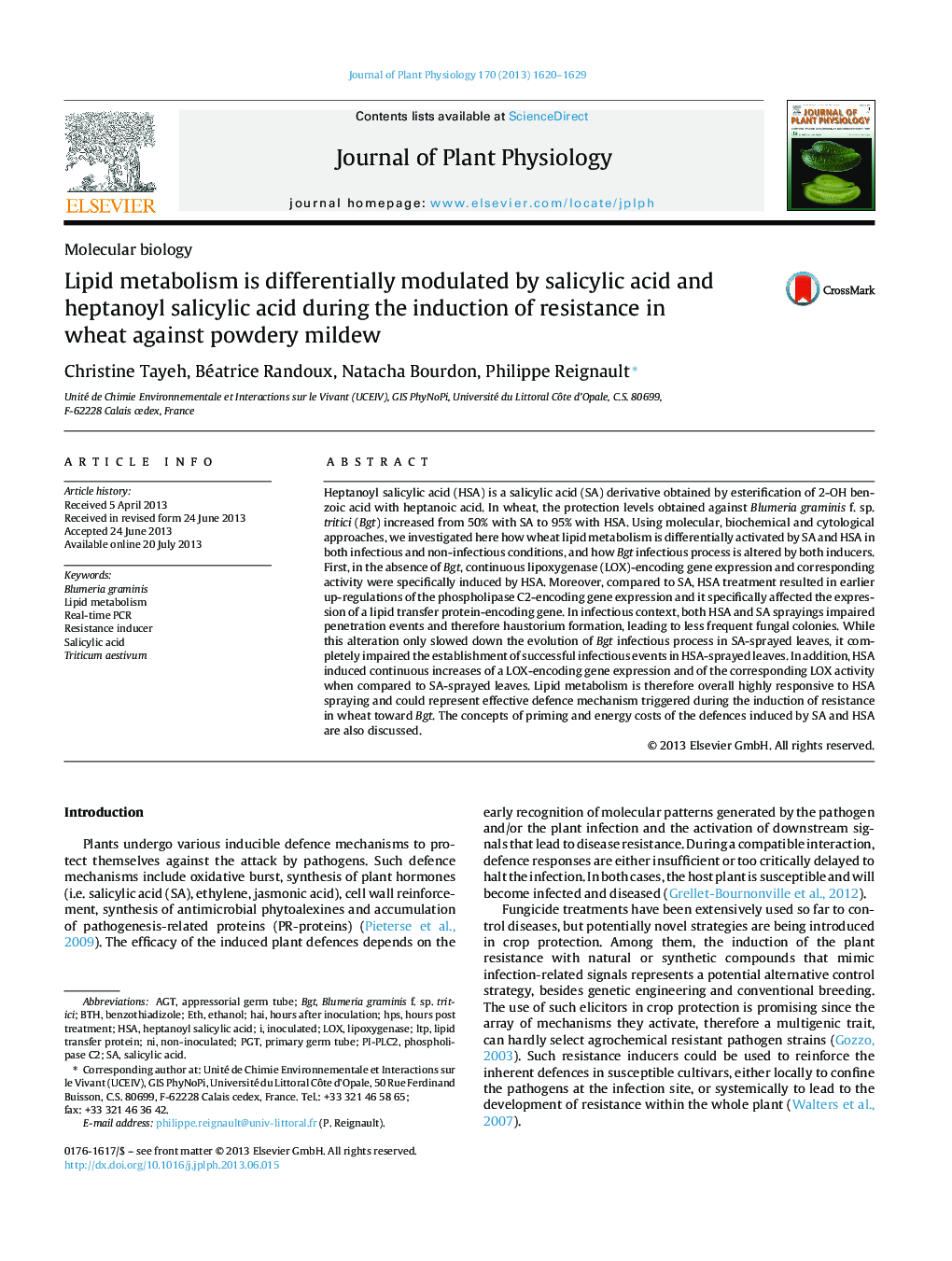| Article ID | Journal | Published Year | Pages | File Type |
|---|---|---|---|---|
| 2055686 | Journal of Plant Physiology | 2013 | 10 Pages |
Heptanoyl salicylic acid (HSA) is a salicylic acid (SA) derivative obtained by esterification of 2-OH benzoic acid with heptanoic acid. In wheat, the protection levels obtained against Blumeria graminis f. sp. tritici (Bgt) increased from 50% with SA to 95% with HSA. Using molecular, biochemical and cytological approaches, we investigated here how wheat lipid metabolism is differentially activated by SA and HSA in both infectious and non-infectious conditions, and how Bgt infectious process is altered by both inducers. First, in the absence of Bgt, continuous lipoxygenase (LOX)-encoding gene expression and corresponding activity were specifically induced by HSA. Moreover, compared to SA, HSA treatment resulted in earlier up-regulations of the phospholipase C2-encoding gene expression and it specifically affected the expression of a lipid transfer protein-encoding gene. In infectious context, both HSA and SA sprayings impaired penetration events and therefore haustorium formation, leading to less frequent fungal colonies. While this alteration only slowed down the evolution of Bgt infectious process in SA-sprayed leaves, it completely impaired the establishment of successful infectious events in HSA-sprayed leaves. In addition, HSA induced continuous increases of a LOX-encoding gene expression and of the corresponding LOX activity when compared to SA-sprayed leaves. Lipid metabolism is therefore overall highly responsive to HSA spraying and could represent effective defence mechanism triggered during the induction of resistance in wheat toward Bgt. The concepts of priming and energy costs of the defences induced by SA and HSA are also discussed.
